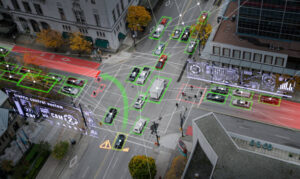In the world of the Internet of Things (IoT), connectivity is the backbone that supports the functionality and success of devices. Choosing the right carrier is crucial to ensure that IoT devices can communicate efficiently and reliably. With the proliferation of IoT devices across various industries, from smart agriculture to urban management, the need for robust and flexible connectivity has become more important than ever.
Importance of Connectivity in IoT
The Critical Role of Selecting the Right Carrier and Technology for IoT Devices
In the realm of the Internet of Things (IoT), connectivity serves as the foundational element that ensures the seamless operation and effectiveness of devices. The choice of carrier and technology is paramount because it dictates the quality and reliability of the communication network that IoT devices rely on. Selecting the appropriate carrier and technology can make the difference between a highly functional IoT deployment and one plagued by interruptions and inefficiencies.
When IoT devices are deployed across diverse environments—from urban areas to remote locations—they face varying connectivity challenges. Factors such as signal strength, coverage, and network stability become crucial. A robust and reliable network ensures that devices can continuously transmit and receive data without significant delays or losses. This continuous flow of data is essential for real-time monitoring, control, and analytics, which are key functions of IoT systems.
Moreover, the technology underpinning the connectivity must align with the specific requirements of the IoT application. For instance, low-power wide-area networks (LPWAN) like NB-IoT and LoRaWAN are ideal for applications needing long battery life and extensive coverage, while 4G and 5G technologies are better suited for high-bandwidth and low-latency applications.
Impact of Connectivity on Device Performance and Reliability
The performance and reliability of IoT devices are directly influenced by the quality of their connectivity. Here are key aspects where connectivity impacts IoT device performance:
- Data Transmission Speed: High-speed networks like 4G and 5G enable rapid data transfer, crucial for applications requiring real-time data processing and instant responses, such as autonomous vehicles and industrial automation.
- Network Latency: Lower latency ensures that data is transmitted with minimal delay, which is vital for time-sensitive applications like remote surgery or emergency response systems.
- Coverage and Availability: Wide coverage ensures that devices remain connected even in remote or challenging environments. Multi-carrier solutions enhance this by switching to the best available network, minimizing downtime.
- Energy Efficiency: Technologies like NB-IoT and LoRaWAN are designed for low power consumption, extending the battery life of devices deployed in the field, which is critical for remote monitoring applications.
- Reliability and Redundancy: Reliable connectivity reduces the risk of data loss and service interruptions. Multi-carrier and multi-technology solutions provide redundancy, ensuring continuous operation even if one network fails.
Evaluating Connectivity Options
Choosing the right connectivity technology is critical for ensuring the optimal performance and reliability of IoT devices. Here’s a detailed look at the available technologies and their respective advantages and disadvantages.
Available Technologies
- 2G
- Description: Second-generation mobile networks primarily designed for voice communication and basic data services.
- Advantages: Extensive global coverage, low cost, suitable for simple IoT applications.
- Disadvantages: Limited data transfer speed, being phased out in many regions, not suitable for high-bandwidth applications. For more details on the 2G and 3G network sunset and how to prepare for it, check out our guide on preparing for the 2G and 3G network sunset.
- 3G
- Description: Third-generation networks offering improved data speeds and support for multimedia services.
- Advantages: Better data speeds than 2G, still widely available, supports a variety of IoT applications.
- Disadvantages: Higher power consumption, being gradually replaced by 4G and 5G. As in the previous case, 3G will be shutdown.
- 4G LTE
- Description: Fourth-generation networks providing high-speed data transfer, suitable for a wide range of applications.
- Advantages: High data transfer rates, low latency, broad coverage, supports high-bandwidth applications.
- Disadvantages: Higher cost compared to 2G/3G, significant power consumption.
- NB-IoT (Narrowband IoT)
- Description: A low-power wide-area network (LPWAN) technology designed specifically for IoT applications.
- Advantages: Excellent indoor coverage, low power consumption, cost-effective, supports a high density of connected devices.
- Disadvantages: Lower data rates, higher latency compared to 4G/5G, limited availability in some regions.
- LoRaWAN
- Description: Long Range Wide Area Network technology for low-power, long-range communication.
- Advantages: Very low power consumption, long-range coverage, suitable for rural and remote areas, low operational cost.
- Disadvantages: Limited data transfer rates, potential interference, private network setup may be required.
- Sigfox
- Description: A global LPWAN network provider focused on low-power, low-cost IoT connectivity.
- Advantages: Ultra-low power consumption, low cost, suitable for simple IoT applications.
- Disadvantages: Very limited data capacity, not suitable for high-frequency data transmission, limited coverage compared to cellular networks.
- Satellite
- Description: Provides connectivity in remote and hard-to-reach areas via satellite communication.
- Advantages: Global coverage, ideal for remote locations, reliable connectivity.
- Disadvantages: High cost, higher power consumption, potential latency issues.
Considerations for Different Applications
Choosing the right technology depends on the specific requirements of your IoT application.
- Low-Power, Long-Range Applications
- Technologies: NB-IoT, LoRaWAN, Sigfox
- Use Cases: Agriculture (soil sensors, weather stations), asset tracking, environmental monitoring
- Considerations: Prioritize technologies with low power consumption and long-range coverage to ensure devices can operate for extended periods without frequent battery changes.
- High-Speed, Low-Latency Needs
- Technologies: 4G LTE, 5G
- Use Cases: Autonomous vehicles, real-time video surveillance, industrial automation
- Considerations: Select technologies that offer high data rates and low latency to support real-time data transmission and processing.
- Industry-Specific Requirements
- Technologies: Varies based on industry needs
- Use Cases:
- Healthcare: Real-time patient monitoring (4G, 5G)
- Smart Cities: Traffic management (4G, NB-IoT)
- Utilities: Smart metering (LoRaWAN, NB-IoT)
- Considerations: Evaluate the specific needs of your industry, such as data transfer frequency, coverage area, and regulatory requirements, to choose the most appropriate technology.
By carefully evaluating these technologies and considering the specific needs of your application, you can ensure that your IoT deployment is both effective and efficient.
Carrier Selection Process
Selecting the right carrier for IoT devices is a crucial step in ensuring reliable and efficient connectivity. Here’s a detailed look at the key considerations in this process:
Coverage and Network Quality
Importance of Global Coverage and Signal Quality
Global coverage and signal quality are essential for IoT devices that need to operate across different regions or in remote locations. Strong and consistent signal quality ensures that devices remain connected, minimizing downtime and data loss. This is particularly important for applications like asset tracking, where uninterrupted connectivity is critical.
How to Evaluate Carrier Coverage and Network Quality
- Research Carrier Maps: Start by reviewing the carrier’s coverage maps to understand their reach and signal strength in your target areas.
- Field Testing: Conduct field tests in various locations to assess actual network performance. This can include measuring signal strength and data throughput.
- User Feedback: Collect feedback from other users or businesses in similar industries to gain insights into carrier reliability and performance.
- Third-Party Reports: Utilize independent reports and studies that evaluate carrier performance and coverage.
Cost and Financial Planning
Analysis of Initial and Recurring Costs
- Initial Costs: These include the cost of SIM cards, activation fees, and any initial setup charges. It’s important to budget for these upfront costs to avoid surprises.
- Recurring Costs: Ongoing expenses such as monthly data plans, overage charges, and maintenance fees need to be considered. Calculate these costs based on your expected data usage and device count.
Strategies to Optimize Connectivity Costs
- Choose the Right Plan: Select data plans that align with your usage patterns to avoid overpaying for unused data or incurring overage fees.
- Negotiate Rates: Work with carriers to negotiate bulk rates or custom plans that fit your specific needs.
- Monitor Usage: Regularly monitor data usage to identify patterns and adjust plans accordingly. Using IoT management platforms can help in tracking and optimizing usage.
- Leverage Multi-Carrier Solutions: Utilize multi-carrier solutions to switch to the most cost-effective network available at any given time.
Technological Compatibility and Support
Ensuring Device Compatibility with Carrier Technology
- Check Specifications: Ensure that your IoT devices support the carrier’s network technologies (e.g., LTE, NB-IoT). This involves verifying frequency bands and protocols.
- Firmware Updates: Some devices may require firmware updates to be compatible with specific carrier technologies. Work with device manufacturers to implement these updates as needed.
Evaluating Carrier Support and Technical Assistance
- Technical Support: Evaluate the carrier’s technical support offerings. This includes availability (24/7 support), response times, and the expertise of support staff.
- Service Level Agreements (SLAs): Review SLAs to understand the level of service and uptime guarantees provided by the carrier.
- Onboarding and Training: Assess the resources the carrier offers for onboarding and training to ensure a smooth deployment and operation of your IoT devices.
By carefully considering these factors, businesses can select carriers that provide robust, cost-effective, and compatible connectivity solutions, ensuring the optimal performance of their IoT deployments.
Benefits of Multi-Carrier and Technology-Agnostic Solutions
Flexibility and Adaptability
How Multi-Carrier Solutions Enable Continuous Connectivity
Multi-carrier solutions ensure that IoT devices maintain continuous connectivity by dynamically switching to the best available network. This capability is especially valuable in areas with variable signal strength or network outages. By utilizing multiple carriers, devices can automatically select the strongest signal, ensuring seamless operation and minimizing downtime.
Benefits of Being Technology-Agnostic
Being technology-agnostic means that Wagtel’s solutions are compatible with a variety of network technologies, including 2G, 3G, 4G, NB-IoT, LoRaWAN, Sigfox, and satellite. This flexibility allows businesses to choose the most appropriate technology for their specific needs, ensuring optimal performance. It also future-proofs deployments, as devices can easily adapt to emerging technologies without requiring significant hardware changes. To understand more about the advantages of a technology-agnostic approach, check out our detailed article on the advantages of technology-agnostic IoT solutions.
Performance and Connectivity Optimization
Improving Operational Efficiency
Multi-carrier and technology-agnostic solutions enhance operational efficiency by ensuring that IoT devices always have access to the best network, reducing the likelihood of connectivity issues. This leads to more reliable data transmission, improved real-time monitoring, and more efficient resource utilization. Businesses can optimize their operations, reduce delays, and improve overall productivity. Additionally, leveraging these advanced IoT solutions can contribute significantly to sustainability efforts by optimizing resource usage and reducing waste. For more information on how IoT can drive sustainability, check out our article on IoT solutions for sustainability.
Reducing Downtime and Maintenance Costs
Continuous connectivity provided by multi-carrier solutions significantly reduces downtime, as devices can switch to alternate networks in case of a primary network failure. This reliability decreases the need for frequent maintenance and troubleshooting, thereby lowering operational costs. Additionally, technology-agnostic devices can seamlessly integrate new network technologies, reducing the need for costly hardware upgrades and extending the lifespan of IoT deployments.
Use Cases and Real-World Examples
Smart Cities
Examples of Smart Cities Benefiting from Robust and Flexible Connectivity
Smart cities are increasingly relying on advanced IoT solutions to enhance urban living. Cities such as Barcelona, Singapore, and New York have implemented IoT technologies to create more efficient, sustainable, and livable environments.
Improvements in Traffic Management, Public Safety, and Utility Management
- Traffic Management:
- Real-Time Monitoring: IoT sensors and cameras monitor traffic flow, detect congestion, and adjust traffic signals in real-time to optimize traffic movement.
- Smart Parking: Parking sensors help drivers find available spots quickly, reducing traffic congestion and emissions.
- Public Safety:
- Surveillance Systems: High-definition cameras and IoT sensors enhance public safety by providing real-time video feeds and data analytics to law enforcement agencies.
- Emergency Response: IoT devices improve emergency response times by providing accurate location data and facilitating communication between different emergency services.
- Utility Management:
- Smart Grids: IoT-enabled smart grids optimize electricity distribution, reduce energy waste, and improve the reliability of the power supply.
- Water Management: Sensors monitor water quality and usage, helping to detect leaks, manage water resources efficiently, and ensure a safe water supply.
Industrial IoT
Examples of Industries Optimizing Operations with Advanced IoT Solutions
Industries such as manufacturing, logistics, and agriculture are leveraging IoT technologies to streamline operations, increase productivity, and reduce downtime.
Increased Productivity and Reduced Downtime
- Manufacturing:
- Predictive Maintenance: IoT sensors monitor equipment health and predict failures before they occur, allowing for scheduled maintenance and reducing unplanned downtime.
- Process Optimization: Real-time data from IoT devices helps in optimizing manufacturing processes, reducing waste, and improving product quality.
- Logistics:
- Asset Tracking: IoT devices track the location and condition of goods in transit, providing real-time updates and ensuring timely deliveries.
- Warehouse Management: Smart sensors and automated systems optimize inventory management, reduce errors, and improve warehouse efficiency.
- Agriculture:
- Precision Farming: IoT sensors monitor soil conditions, weather, and crop health, enabling farmers to make data-driven decisions that enhance crop yields and reduce resource usage.
- Livestock Monitoring: IoT devices track the health and location of livestock, improving animal welfare and farm productivity.
These examples illustrate how IoT solutions can transform various sectors, leading to more efficient and effective operations. By leveraging Wagtel’s multi-carrier and technology-agnostic solutions, these benefits can be realized across different applications and industries.
Conclusion
In the world of IoT, connectivity is the backbone that supports the functionality and success of devices. Selecting the right carrier and technology is paramount to ensure efficient and reliable communication. The performance and reliability of IoT devices are directly influenced by the quality of their connectivity, which impacts data transmission speed, network latency, coverage, and energy efficiency.
Evaluating connectivity options and choosing the appropriate technology, such as 2G, 3G, 4G, NB-IoT, LoRaWAN, Sigfox, or satellite, is essential. Each technology has its advantages and disadvantages, and the selection should be based on the specific needs of the application, including low-power, long-range requirements or high-speed, low-latency demands.
The carrier selection process involves assessing coverage and network quality, understanding the costs, and ensuring technological compatibility and support. Multi-carrier and technology-agnostic solutions offer flexibility and adaptability, enhancing operational efficiency and reducing downtime. These solutions are crucial for industries like smart cities and industrial IoT, where reliable and efficient connectivity can lead to significant improvements in traffic management, public safety, utility management, and overall productivity.
By leveraging Wagtel’s multi-carrier and technology-agnostic solutions, businesses can ensure continuous connectivity, optimal performance, and future-proof their IoT deployments. This approach not only improves operational efficiency but also contributes to sustainability efforts by optimizing resource usage and reducing waste.
For more detailed insights on the 2G and 3G network sunset and preparing for it, check out our guide on preparing for the 2G and 3G network sunset. Additionally, explore the advantages of a technology-agnostic approach in IoT with our article on the advantages of technology-agnostic IoT solutions, and learn how IoT can drive sustainability in our IoT solutions for sustainability article.






